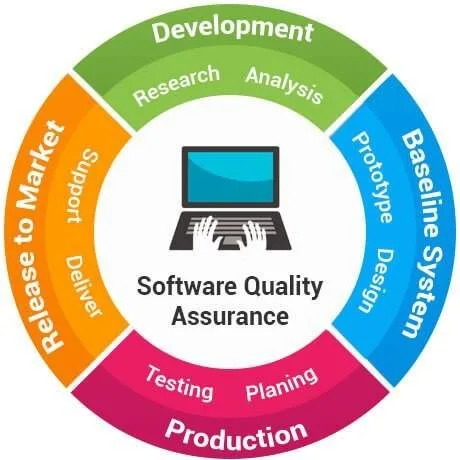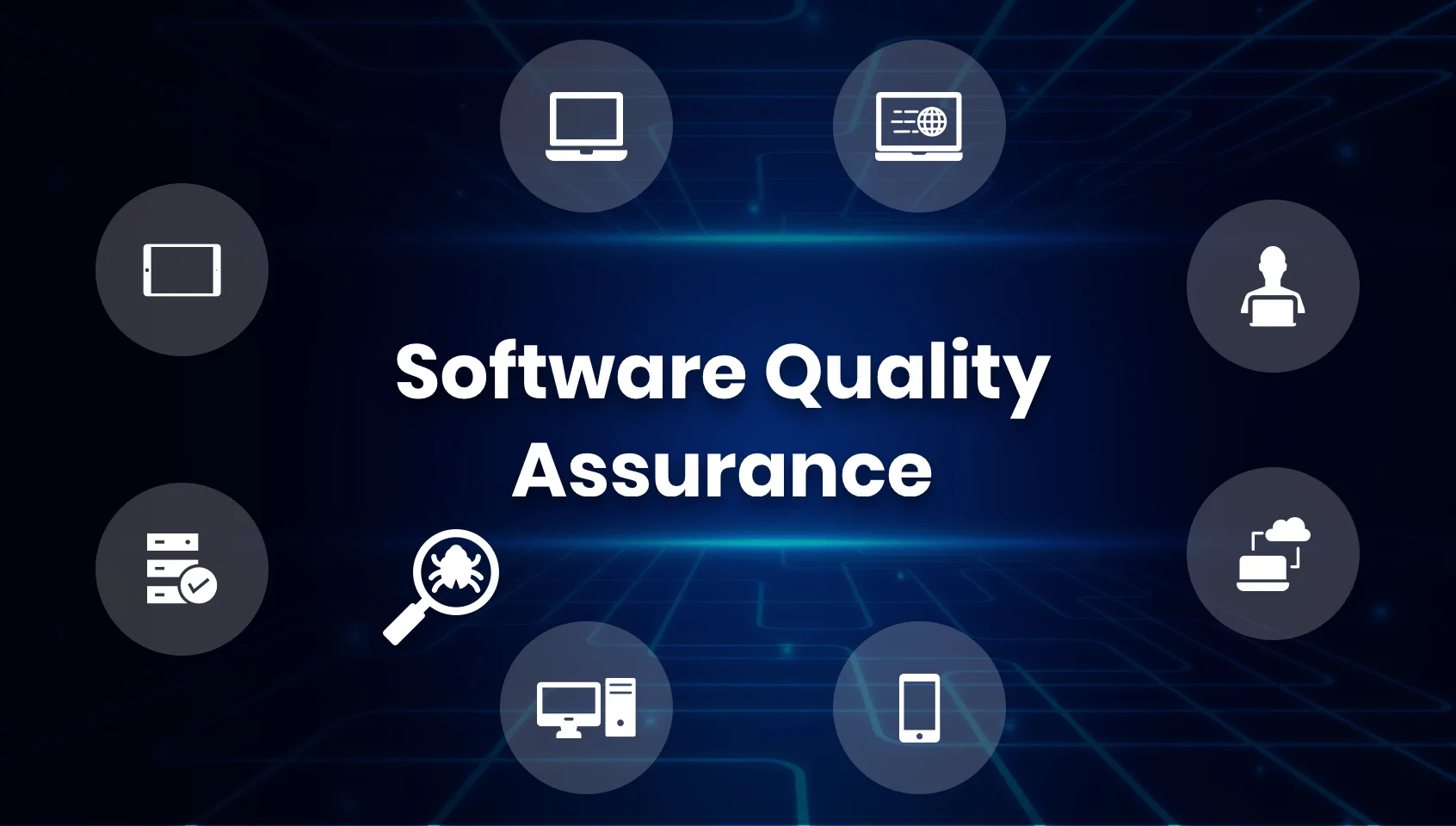What is Software Quality Assurance?
Software quality assurance is an approach and discipline of testing the software development methods and techniques employed in a given project to make sure proper quality of the final product. It can consist of ensuring adherence to accepted standards or templates, including ISO/IEC 9125, SPICE or CMMI, or ensuring a basic level of functionality. This helps the client software developers, clients and other stakeholders to understand and implement quality approaches that are necessary for meeting their business needs. In a nutshell, it is concerned with creating quality solutions or products that meet specifications.
The software development process involves various levels of assurance testing. The first step is ‘proofing’ the functionality of a product. The next step is ‘quality inspection’ of the application and systems integration. The final level is ‘maintenance’ of the application and systems integration. During each of these stages, specialized individuals who are expert and skilled in their fields perform the various tests and ensure the final product meets specific requirements.
There are two main ways to approach the issue of software assurance vs quality control. One is to use a formal set of quality assurance guidelines followed by an exhaustive series of tests and checks to guarantee compliance. The second method is to use an automated tool that compares and checks various systems during the development process. Both methods have their own benefits and drawbacks. The former is considerably more expensive, while the latter offers a faster solution and does not have the same risks as the test methods.
The traditional approach has some advantages; the first is that it puts a greater emphasis on human evaluation and subjective observation during the quality assurance process. It also makes use of in-house and external quality assurance personnel who are familiar with the software products and know what to look for. However, there are some problems associated with this approach.

Firstly, the manual inspection cannot identify all defects that are visible to the naked eye, so it will miss some components that are hidden. Secondly, some defects may not be visible to a manual eye but are in fact of great importance to the business. For example, an undetected bug that causes a system to crash could prevent the business from making full use of its services or lead to loss of customers. Therefore, manual inspection cannot always identify all defects and there are times when a bug goes unnoticed because the operator made an assumption or relied on information provided by the supplier. Finally, the suppliers do not provide information on all components included in the standard and a technician trained in software testing will need to verify the quality management components against the assumption made.
The traditional software assurance process employed manual testing and inspection by specialist personnel. In most cases, the specialist has knowledge of the source code, but little else, which is why some software product suppliers insist that only an in-house or external trainer should conduct the test. What this means is that the customer’s assurance is based entirely on a scorecard given by a person who does not have knowledge of the source code. This approach also makes the test susceptible to human error since it relies on a series of criteria that are easily measured, but which are unlikely to be known by the user.
It is for these reasons that a recently introduced approach called quality management integration or QA, has seen many businesses adopt this approach to software product assurance. QA integrates the testing procedure with the production process so that the two can identify problems more easily and reduce the risk of false-positive results during the production phase. What is important to note is that while software assurance has become a highly technical undertaking, there are no specialised training courses specifically geared towards software assurance, so this is where some business managers make the mistake of approaching it as a technical activity.
A comprehensive understanding of what QA is and how it differs from traditional development processes is therefore fundamental to software assurance. The best way to approach QA is from two perspectives: the engineering one and the business perspective. From the engineering perspective, a QA analyst must understand the requirements well enough to write a program that is robust and yet simple enough for end users to use. From the business perspective, the key to software quality assurance is in having strong development processes. Thus, it is important for companies to develop good process execution, hire good people and train them properly in order to minimize the chance of scope creep and yet ensure the highest degree of program reliability and security.
Creating an SQA Management Plan
For any QA practitioner, creating a Quality Assurance (QA) strategy is critical to ensuring that their business’s software development efforts are well supported by an effective program. The basic function of a QA plan is to develop software that has the highest level of quality and functionality while still meeting the company’s production standards. While software development companies employ various techniques to achieve this goal, such as quality assurance testing or risk management, it is important for organizations to create their own strategies in order to determine which techniques they deem necessary to support their software development programs. If an organization lacks a plan, the implementation of unnecessary or faulty techniques could easily result in costly mistakes and increased costs.
In order to create a quality management plan, one must first identify which software development processes need to be employed in order to meet the company’s future requirements. Once these techniques have been determined, the next step is to create a list of those techniques that are critical to meeting the goals of the company. Many companies use a combination of different techniques in order to achieve their goals, including risk management, thorough bug fixing, and quality assurance testing, which are all essential for software quality assurance. When these techniques are combined, a more precise strategy can be created that will help the organization determine which techniques are most beneficial to their software development projects. While many companies decide on one technique, such as bug fixing, many organizations combine techniques and create a general strategy that will cover all of their software development projects.
In addition to the strategy that is developed, the program must be able to measure progress, and the process of quality assurance testing must be regularly monitored in order to prevent defects in the final product. These defects can lead to lost time, increased expenses, and other problems, so it is essential for a QA manager to monitor and report on the progress of the software development project on a regular basis. In order to do so efficiently, however, it is often necessary to hire a third-party company that can dedicate its time and resources to the task, as well as provide outside guidance when necessary. Because these services are not always provided by programming firms, many organizations have decided to outsource their software development projects to companies that specialize in providing software quality assurance services. By hiring a dedicated team of professionals that can work together effectively and productively, businesses have a more accurate way of determining whether their software development efforts are meeting their goals and objectives.
Software Engineering Techniques
Why should you apply software engineering techniques? Answer and explanation: Software engineering techniques have been applied mathematics and science techniques to solve numerous real-world issues. These techniques are mainly utilized in systems engineering, but they may also be employed in almost any other type of engineering endeavor, irrespective of its scope or goal. Software quality assurance is one area that requires application of these techniques because of the sensitive nature of the products that we use in our daily lives. Software quality assurance starts with thorough analysis of software product requirements.
There are many software systems engineering techniques that one may apply to software reliability and testing. The most common among them is Software testing, which aims to verify whether the software systems satisfy expected specifications and functionality. Software testing can determine the existence and non-existence of any defects and flaws in a specific product or program that can bring a drastic change in its functioning. By the use of appropriate testing techniques and tools, programmers can detect these defects before their presence is made known to the general public.
Another technique that one can employ in order to improve quality assurance is software quality assurance methods and strategies. These techniques involve defining standard approaches for software quality assurance and defining management tools and techniques. These techniques will help in the identification of problems in production systems that cannot be detected by testing methods. Management must then take remedial action to mitigate the impact of the defect on the production processes. Through the systematic analysis of production processes and systems, software quality assurance techniques have proven to be very effective.
Having a Multi-Testing Strategy
Having a Multi-Testing Strategy makes it possible for quality assurance services providers to deliver quality software engineering to clients across the globe. When a software development company delivers quality software to a global clientele, QA professionals must be able to test and evaluate their software in different ways. For this reason, having a Multi-assing Strategy can be extremely helpful as it allows QA professionals to evaluate software engineering from different perspectives.
By enabling QA professionals to execute their software engineering techniques across different business functions such as product development, technical support, and support of mobile devices in the enterprise, a Multi-assing Strategy can provide long-term sustainable benefits to organizations. QA professionals can effectively apply quality assurance techniques in the product development process by using both continuous integration and post-sales technical support to ensure that software quality assurance processes are implemented appropriately and effectively. Organizations may also use continuous evaluation and bug fixing strategies to monitor the functionality, stability, and security of their software applications.
The integration of software engineering techniques used in the software development process along with operational process adherence and quality assurance methods implemented throughout the project enables QA professionals to successfully overcome business processes and software quality issues. Through a Multi-assing Strategy, QA professionals can effectively deal with software development issues such as testing cycle cost-effectiveness, software quality assurance process relevance, training process adherence, and software acceptance guidelines. This multi-passing strategy enables QA professionals to address software testing risks by supporting and performing successful software release lifecycle, defect reduction, refactoring and redesigning, migration, and future change management. It also enables QA professionals to determine software testing requirements by assessing the risks associated with the software engineering techniques.
Enforcing Process Adherence
The first lesson in this series of lesson exercises on software quality planning is to know what you are looking for. A good software quality assurance team should be able to provide a clear picture of the project scope, as well as a cost estimate and a time line. It is important to set the testing objectives clearly from the beginning, because they will dictate the success or failure of the project. The test cases should also be specified in a way that allows the testers to understand their responsibility and avoid wasting time. Another important thing to set for testing is the software users’ manual, which should describe to testers exactly what they need to do to successfully complete the test cases.
This final lesson in the series is about software engineering principles and practices that can be used throughout the software development life-cycle. When testing a new piece of software, it is important to verify that the requirements were documented in the software engineering process definition. Then, the QA team should validate that the specifications are correct according to the software quality plan. If not, they should add a defect report to the software development life-cycle, which can then be used by the software engineers to fix any potential defects.
The most important thing for QA team members to remember during testing is that they must stick to the quality plan even if the software product does not meet all of the requirements set forth in the plan. For example, if a tester has to verify whether a particular feature will work under certain conditions, he or she should not make any changes unless the tester determines that the current set of testing requirements are appropriate. When a QA team begins a new case, they must ensure that they have followed the steps from the last case in the software development lifecycle, which will help them to ensure that they do not make mistakes in future cases. Following the software quality plan and its Testing Plan Supplement is an important way to ensure that software engineering principles and rules are followed throughout the project. When this is done, there is less chance that a software product will fail to meet quality objectives, as described in the software engineering guidebook.







